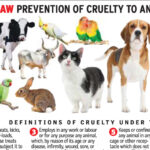In a world increasingly aware of ethical consumption, the question of whether a brand is genuinely cruelty-free has become paramount. The beauty industry is under scrutiny for its animal testing practices, leading consumers to demand transparency and integrity from their favorite brands. Among these brands, Garnier claims to stand firm on the principles of being cruelty-free. However, do these claims hold water? Let’s delve into Garnier’s animal testing policies and the broader implications for consumers striving to make conscientious choices.
Garnier, a subsidiary of the cosmetics conglomerate L’Oréal, has made significant strides in promoting its commitment to cruelty-free practices. This concept is founded on the premise that no products should be tested on animals at any stage of development. It resonates deeply with a growing demographic of consumers who prioritize ethical considerations alongside efficacy when selecting beauty products.
The palimpsest of beauty industry standards tends to obscure the truth, making it crucial to peel back the layers of corporate communication. Garnier’s commitment to avoid animal testing is prominently publicized on their website and product labeling. They assert that they do not test their products on animals, nor do they commission others to do so on their behalf. This straightforward assertion initiates an optimistic narrative for conscientious consumers. However, reality is often more nuanced than initial appearances suggest.
To understand Garnier’s stance fully, one must consider the regulatory landscape that governs cosmetics globally. In the United States, for instance, there are no federal laws expressly prohibiting animal testing for cosmetic products. This lack of stringent regulation has left companies with a choice: they can either comply with animal testing protocols that are deemed acceptable—especially for products marketed in countries where such methods remain lawful—or they can commit to cruelty-free practices without caveats.
Garnier, while purporting to be cruelty-free, operates under the umbrella of L’Oréal, which has been linked to testing practices in regions where such measures are mandatory, particularly in China. In recent years, however, China has begun to relax some of its stringent regulations regarding animal testing, leading brands to rethink their market strategies. Because of these evolving policies, consumers may find themselves in a quagmire when attempting to assess the true ethical position of brands like Garnier. Although Garnier’s individual commitment may be clear, the association with a larger entity that has a complicated history adds a layer of complexity.
The potential paradox becomes evident: even if Garnier itself does not engage in animal testing, the parent company’s business practices may cast a shadow over their claims. Understanding this corporate structure is crucial for consumers who are striving to buy products aligned with their ethical beliefs. Navigating the intricate intersections of corporate governance, ethical marketing, and consumer rights can be daunting; yet, it is imperative to examine each layer critically.
Moreover, transparency plays a pivotal role in discerning authenticity in any brand’s cruelty-free claim. Garnier’s communication strategy touts its adherence to animal welfare, but the broader narrative is often shrouded in ambiguity. To truly gauge the ethical standing of a product or a brand, one must look beyond the marketing slogans and scrutinize the fine print. Consumers must actively seek information regarding the supply chains, sourcing practices, and policies regarding animal testing in every market where the brand operates.
Additionally, ethical consumption extends beyond the mere absence of animal testing. Integral to this conversation is the concept of sustainability, which encompasses environmental stewardship and social responsibility. Garnier has made advances in sustainability efforts; they emphasize eco-friendly packaging and ingredients sourced through responsible practices. This additional layer of ethical commitment stretches the conversation about cruelty-free beyond animal testing and into a broader dialogue about corporate responsibility.
As consumers grow more inquisitive and judicious in their purchasing choices, it becomes essential to distinguish between marketing ploys and truthful representations. Some brands may adopt the cruelty-free label as a mere marketing strategy to capture the growing demographic of ethically-minded consumers. Hence, it is vital for shoppers to conduct thorough research, looking for established certifications by recognized organizations that scrutinize cruelty-free claims—such as Leaping Bunny or PETA’s Beauty Without Bunnies program.
In light of all these considerations, what should consumers take away from their research on Garnier? Firstly, while Garnier does advocate for a cruelty-free ethos and has made a commendable commitment to this principle, consumers must remain vigilant. Transparency and continued accountability are essential in ensuring that these claims are more than just surface-level affirmations. Recognize that ethical consumption is a journey. With each product purchase, consumers wield their purchasing power to support brands that truly reflect their values.
To conclude, the question “Is Garnier animal cruelty-free?” does not have a simplistic answer. The brand’s self-representation suggests a commitment to ethical practices, but the complexities of corporate ownership and market regulations require a discerning perspective. Engaging with this subject thoughtfully empowers consumers to make informed decisions that promote genuine ethical practices within the beauty industry, encouraging brands like Garnier to uphold their promises and inspire change. The more consumers demand clarity and integrity, the more likely brands will respond by embracing authenticity in their cruelty-free claims.








